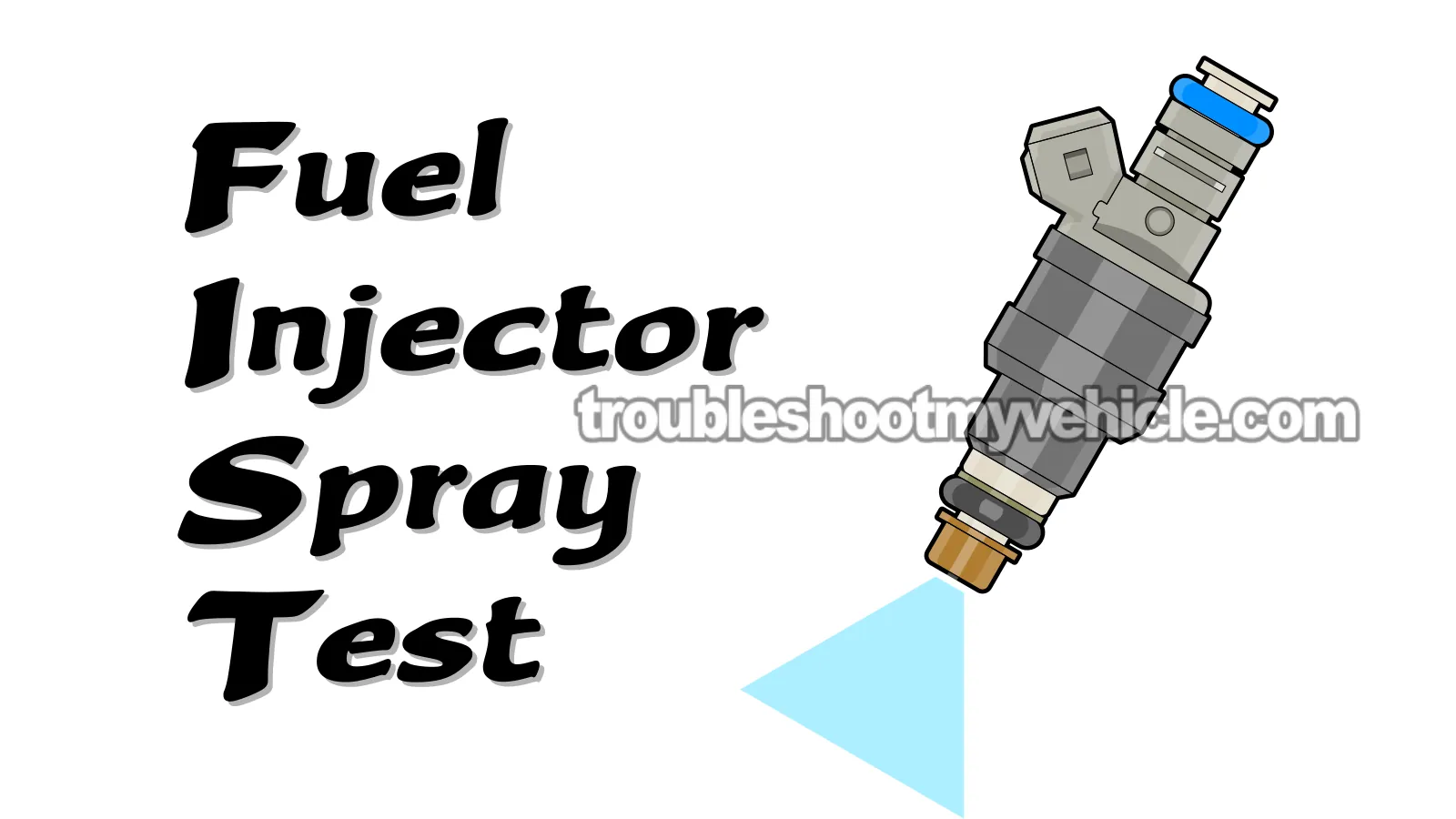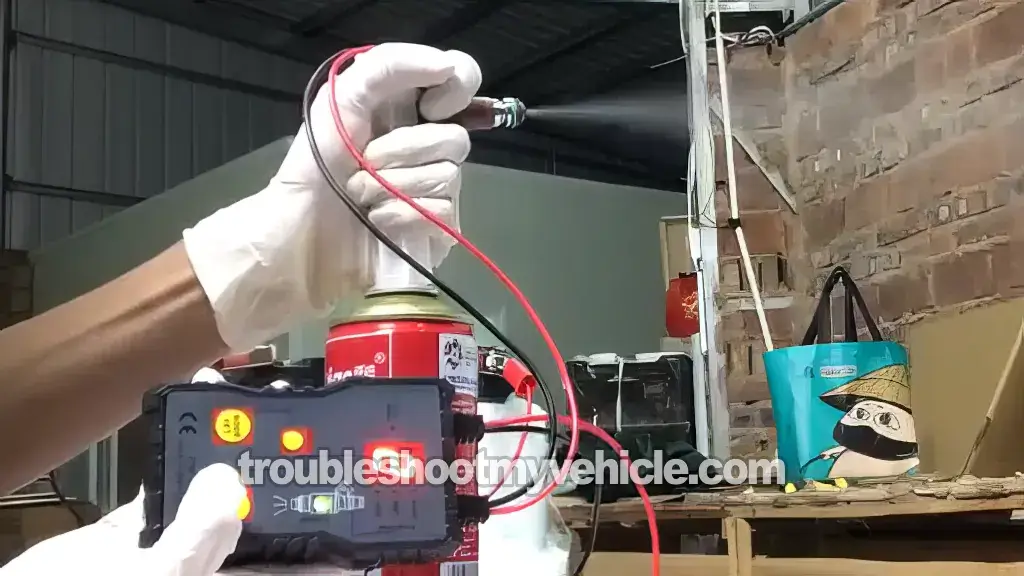
When you're trying to figure out if a fuel injector is working properly (spraying fuel) —especially if you suspect a misfire caused by a clogged injector— one of the best things you can do is visually check it's spray pattern.
In this tutorial, I'll walk you through a DIY fuel injector spray test that's become one of my go-to methods for diagnosing clogged injectors. All you need is a basic injector cleaning kit you can order online (and I'll show you exactly where to get one).
Contents of this tutorial:
APPLIES TO: This tutorial applies to the following vehicles:
- 3.9L V6 Dodge Ram 150 Pickup: 1992, 1993.
- 3.9L V6 Dodge Ram 250 Pickup: 1992, 1993.
- 3.9L V6 Dodge Ram 1500 Pickup: 1994, 1995, 1996, 1997, 1998, 1999, 2000, 2001.
- 3.9L V6 Dodge Ram 2500 Pickup: 1994, 1995, 1996, 1997, 1998, 1999, 2000, 2001.
FUEL INJECTOR RESISTANCE TESTS:
- How To Test The Fuel Injectors (1992-1999 3.9L V6 Dodge Ram Pickup).
- How To Test The Fuel Injectors (2000-2001 3.9L V6 Dodge Ram Pickup).
Fuel Injector Spray Test Basics
A clogged fuel injector on a misfiring cylinder can still pass a multimeter resistance test with flying colors —you know, the one where you check if the internal resistance is within spec.
In other words, even if the reading looks perfect, the injector might still be blocked and either not spraying at all or not delivering enough fuel. I've seen this more than a few times —resistance looked fine, but the misfire stuck around because the injector wasn't spraying properly or at all.
The good news is, on the 3.9L V6 Dodge Ram engines, removing the injectors is pretty straightforward. That makes it much easier to run a spray pattern test.
You will need a specific tool for this test —but the upside is, it's affordable and easy to find online.
This tool setup is super simple and comes with just two main parts:
- Fuel injector power module: This connects to your pickup's battery and simulates the injector pulse —just like the PCM would do.
- Plastic adapter fitting: This lets you hook up a can of brake cleaner directly to the fuel injector after you've removed it from the engine.
Here's how it works: once the injector is out and connected to the adapter and power module, you hit the pulse button. That forces brake cleaner through the injector and out the tip.
The coolest part? You can actually watch the spray pattern as it happens:
- If the injector's good, it'll spray a nice, even mist.
- If it's clogged, you'll see a stream (like a squirt gun) —or nothing at all.
I've used this tool a few times now, and honestly —I wish this kind of setup had been around decades ago. Here's where you can get your hands on one:
Disclosure: As an Amazon Associate, I earn from qualifying purchases. If my tutorials help you, using these links is an easy way to support the site at no extra cost to you. Thank you!
Checking If The Fuel Injector Sprays Fuel

Before you jump into the test, there are a few basic —but absolutely essential— safety steps to follow. You'll be dealing with pressurized brake cleaner and sending power to an injector, so:
- Make sure you're working in a well-ventilated area, away from open flames, sparks, or anything that could ignite brake cleaner fumes.
- Wear safety glasses to keep your eyes protected.
- Use gloves —brake cleaner is harsh chemical to get on your skin and not something you want on it.
Once you've got everything prepped, here's how to run the test:
- 1
Take the fuel injector out of the engine.
- 2
Pop the spray nozzle off your can of brake cleaner.
- 3
Connect the injector to the plastic adapter. This lets you hook the injector up securely to the brake cleaner can.
- 4
Attach the adapter to the brake cleaner can. Make sure it's a tight fit so you don't get any leaks under pressure.
- 5
Use the power module to activate the injector. This simulates what the PCM does, letting the brake cleaner flow through the injector just like fuel would.
Now, here's how to interpret what you see:
CASE 1: You get a fine, cone-shaped mist. Perfect —that injector is working properly and not clogged.
CASE 2: No spray at all —not even a mist. That injector is blocked or stuck shut. You'll need to replace it.
Tech Tip: Always Replace Injector O-Rings
There's one thing you should never skip when reinstalling a fuel injector —whether you're putting the same one back or dropping in a new one: always use new O-rings.
Why? Because those little O-rings are what create a tight, leak-proof seal between the injector and the fuel rail. Once you pull the injector, the O-rings can get scratched, stretched, or slightly deformed —even if they look okay.
Reusing them might seem like an easy shortcut, but it's risky. A damaged O-ring can cause a fuel leak —and with hot engine parts nearby, that could turn into a serious fire hazard fast.
To stay on the safe side, here's what you should do instead:
- Install brand-new O-rings that are the correct match for your specific injector and engine setup.
- Apply a thin layer of clean engine oil to the O-rings before installation. This helps them slide into place smoothly and prevents any damage during reassembly.
Spending a couple of extra minutes here can save you from a fuel leak, engine trouble —or worse. O-rings are cheap. Skipping this step isn't worth the risk.
Fuel Injector Wiring Diagrams
- Fuel Injector Wiring Diagram (1992-1993 3.9L V6 Dodge Ram Pickup).
- Fuel Injector Wiring Diagram (1994-1995 3.9L V6 Dodge Ram Pickup).
- Fuel Injector Wiring Diagram (1996-1997 3.9L V6 Dodge Ram Pickup).
- Fuel Injector Wiring Diagram (1998-2000 3.9L V6 Dodge Ram Pickup).
- Fuel Injector Wiring Diagram (2001 3.9L V6 Dodge Ram Pickup).
More 3.9L V6 Dodge Ram Pickup Tutorials
You can find a complete list of diagnostic tutorials for the full-size Dodge Ram pickups in this index:
Here's a sample of the tutorials you'll find in the index:
- How To Test The Ignition Coil (1992-2001 3.9L V6 Dodge Ram Pickup).
- How To Test The Intake Air Temp (IAT) Sensor (1998-2001 3.9L V6 Dodge Ram Pickup).
- Testing The Front Oxygen Sensor's Performance (1996-2001 3.9L V6 Dodge Ram Pickup).
- How To Test For A Blown Head Gasket (1989-2001 3.9L V6 Dodge Ram Pickup).

If this info saved the day, buy me a beer!




